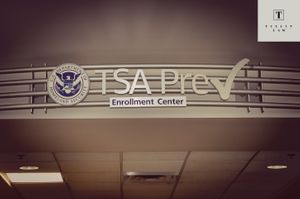It is in the government’s best interests that professional employees on federal contracts be fairly compensated. However, recompetition of service contracts often results in lower compensation for professional employees, which can harm the quality of professional services required for contract performance. Thus, certain solicitations for service contracts may contain the provision at Federal Acquisition Regulation (FAR) 52.222-46, which requires procuring agencies to conduct a two-prong evaluation of professional employee compensation plans. The first prong is essentially a price realism evaluation of the offeror’s proposed compensation to determine whether it understands the contract requirements and has proposed a compensation plan appropriate for those requirements. The second prong requires the procuring agency to determine whether a proposal contemplates compensation levels lower than those of predecessor contractors by comparing proposed compensation rates to incumbent rates. Thus, in addition to a price realism analysis, FAR 52.222-46 requires procuring agencies to compare the compensation of the incumbent professional staff to the proposed professional compensation. If the procuring agency fails to conduct such a comparison, the evaluation of professional employee compensation plans may be protested as unreasonable.
In B-4213197, a decision issued on March 4, 2025, the Government Accountability Office (GAO) sustained such a protest by determining that the agency failed to evaluate the offerors’ proposed professional compensation plans per FAR 52.222-46 requirements. The post-award protest challenged the issuance of a task order by the Air Force to provide communications support for the Combined Air and Space Center Operations Center (CAOC), located at Al Udeid Air Base in Qatar. The CAOC provides the command and control of airpower across the U.S. Central Command Area of Responsibility, accounting for a 21-nation region stretching from Northeast Africa and the Middle East to Central and South Asia. The fair opportunity proposal request (FOPR) advised offerors that the government would evaluate their proposed professional compensation plans per the provision at FAR 52.222-46. The FOPR also warned offerors that if their proposals contemplated compensation levels lower than the incumbent contract for the same work, the government would evaluate their ability to maintain program continuity, uninterrupted high-quality work, and ensure the availability of required competent professional service employees.
The Air Force first compared the proposed direct labor rates when evaluating the offerors’ professional employee compensation plans. To determine whether the rates were realistic, the Air Force compared the rates to an eight percent discount from incumbent direct labor rates for comparable labor categories (LCATs). When historical incumbent direct labor rates were unavailable, the Air Force compared the proposed direct labor rates to market rates from the Economic Research Institute (ERI). The evaluation team determined that an LCAT may have realism concerns if an offeror’s proposed rate was below the eight percent benchmark of the incumbent rate or ERI market rate. At the time of the initial realism evaluation, six of the nine direct labor rates proposed by the awardee were below the eight percent benchmark. Consequently, the Air Force issued an interchange notice (IN) to the awardee requesting it to address the rates that were more than eight percent below the incumbent rates. In response, the awardee adjusted its labor rates upwardly, bringing all but one LCAT within the eight percent threshold. Before making the award, the Air Force concluded that the awardee’s rates were now within a realistic range compared to the incumbent’s historical rates and the ERI market data. For the one LCAT that was more than eight percent lower than the historical incumbent rate, the agency concluded that it had no issue with the rate when considering the awardee’s additional data regarding total compensation and the revisions made to its proposal.
In resolving the post-award protest, the GAO determined that the Air Force’s evaluation of the offerors’ professional employee compensation plans failed to fully comply with the requirements of the provision at FAR 52.222-46. Specifically, the Air Force failed to explain, discuss, or otherwise support its application of the eight percent baseline. The GAO noted that the provision at FAR 52.222-46(b) requires that proposals envisioning compensation levels lower than those of predecessor contractors for the same work be evaluated for the offerors’ ability to maintain program continuity, uninterrupted high-quality work and provide the required competent professional service employees. In this evaluation, the Air Force failed to explain why it believed the awardee could maintain program continuity, among other requirements noted in FAR 52.222-46(b), while paying its workforce up to eight percent less than what the incumbent employees were currently being paid. In sustaining the protest, the GAO determined that the Air Force’s mechanical flagging of rates that were more than eight percent lower than the incumbent rates without further explanation was insufficient to support a conclusion that the Air Force considered the elements of FAR 52.222-46(b) during the evaluation of the offerors’ professional employee compensation plans.
Evaluating professional employee compensation plans under the provision at FAR 52.222-46 requires a two-prong analysis. The first prong requires a price realism evaluation, while the second prong requires comparing the proposed compensation plans to that of the incumbent contractor. Contractors should be mindful that comparing an offeror’s proposed professional employee compensation to that of the incumbent contractor is a separate inquiry from the realism of the proposed plan. The procuring agency must satisfy both prongs when evaluating professional employee compensation plans. Furthermore, per FAR 52.222-46, if an offeror proposes lower compensation levels than the incumbent contractor, the procuring agency must further evaluate that offeror’s proposed compensation plan for its ability to maintain program continuity, uninterrupted high-quality work, and provide competent professional service employees. In such situations, the procuring agency’s failure to consider the elements of FAR 52.222-46(b) or adequately document its supporting rationale will likely render the evaluation unreasonable and provide unsuccessful offerors a basis to file post-award protests.
This Bid Protest Insight is provided as a general summary of the applicable law in the practice area and does not constitute legal advice. Contractors wishing to learn more are encouraged to consult the TILLIT LAW PLLC Client Portal or Contact Us to determine how the law would apply in a specific situation.





